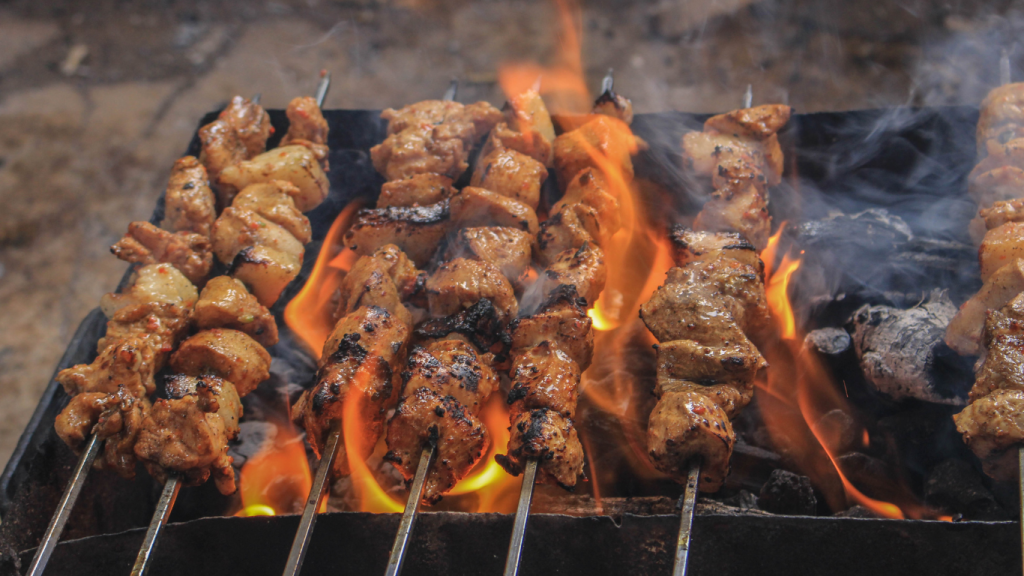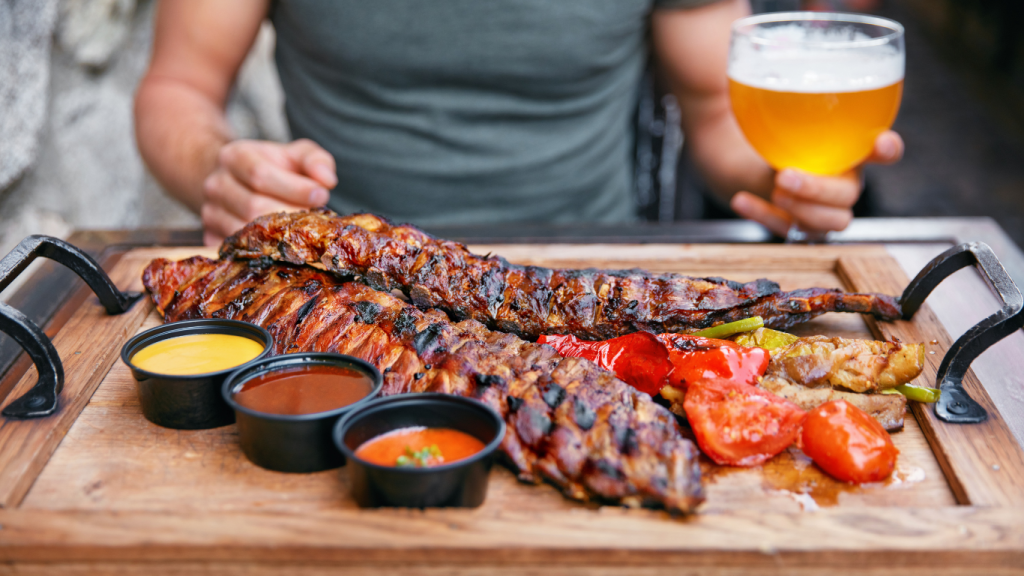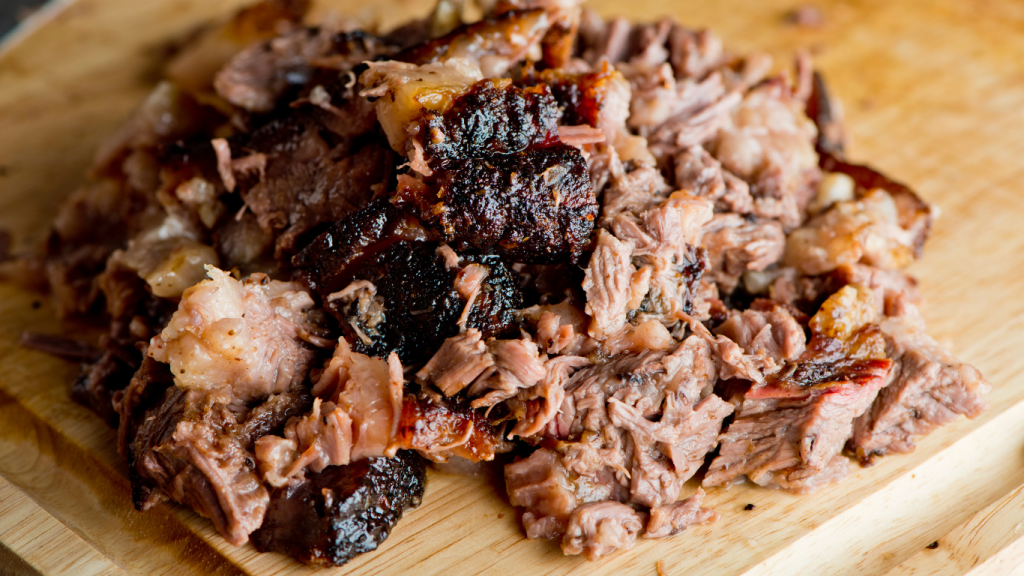A few tips about eating ‘cue: Beer is the best accompaniment; sweet drinks plus BBQ sauce mask meat’s flavor. If you’re not a brew enthusiast, lemonade and iced tea are traditional. Next, the same cut of meat can taste entirely different in each restaurant. It depends on the cooking method, especially for ribs and chicken. Smoked meats, such as brisket and pulled pork, are prepped differently and smoked on traditional wood.

Texas-style has a dry rub of spices and is smoked over post oak, mesquite or hickory, depending on region; Carolina style requires “mopping” – basting – pork shoulder with vinegar, and smoking over hickory or applewood; Kansas City-style uses a dry rub but drowns brisket, beef ribs, pork ribs and belly in rich, sweet tomato-based sauce after smoking in a gas-fired smoker or over traditional hickory. The cut and preparation of the meat, the wood, amount of smoke, and cooking time all play a part. Regional sauces change the flavor profile too.

Finally, the serving method matters: Why is brisket “chopped” and pork “pulled”? Brisket has a fattier first cut and a leaner second cut. When you order sliced brisket, you can state your preference. For some of both, order chopped brisket. Pork is “pulled” by hand or with forks along the grain of the meat, making for tender eating. When pulled pork comes from the whole hog, the effect is the same as with chopped brisket: the leaner cuts and fattier cuts are mixed together, creating a perfectly balanced mouthful.








